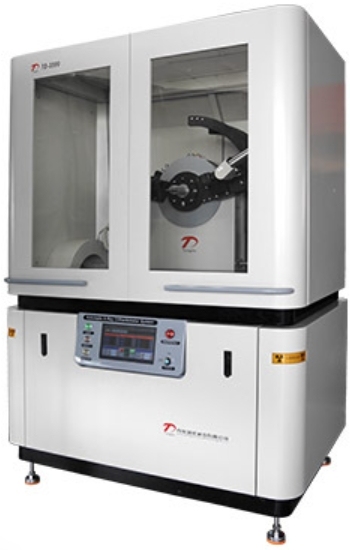
News
The WBK-01 X-ray Irradiator from Dandong Tongda Science & Technology Co., Ltd. offers a safe, compact, and cost-effective alternative to isotope sources. It enables efficient cell/animal irradiation and supports critical research like the Sterile Insect Technique for eco-friendly pest control.
Dandong Tongda's X-ray diffractometers feature imported PLC control systems ensuring stable operation and reduced failure rates. Key advantages include: high-power X-ray generation, modular design for easy maintenance, advanced safety protocols, 0.0001° precision goniometer, and compatibility with international data standards. The systems support diverse sample types and come with comprehensive accessories.
The TD-Mini X-ray Stress Analyzer from Dandong Tongda Science and Technology Co., Ltd. uses X-ray diffraction technology for non-destructive testing. Measures stress in metals/plastics with high precision and field adaptability. Features compact design, intuitive operation, high efficiency, and wide applications. Includes 60W X-ray tube with multiple targets and high-speed photon counting detector (>1x10⁹ cps).
The TD-RSD X-ray Diffraction Residual Stress Analyzer integrates multiple diffraction geometries and high-precision detection technologies. It enables accurate residual stress analysis in metals, ceramics, and composites, featuring 3kW power, ±7MPa repeatability, and automated operation for industrial and research applications.
TDTC-150: A portable X-ray stress analyzer for lab and on-site use. It rapidly measures residual stress, retained austenite, and analyzes alloy structure & phases. Key features include high precision, multi-mode analysis, and efficient data acquisition for diverse materials.
The WBK-01 X-ray Irradiator by Dandong Tongda Science & Technology Co,. Ltd.provides a safe, cost-effective alternative to isotope irradiators. This compact lab instrument streamlines cell and small animal irradiation for biomedical and pest control research, featuring user-friendly operation without radiation licensing requirements.
Dandong Tongda Science and Technology Co., Ltd. is a leading manufacturer of X-ray analysis and non-destructive testing equipment. As a national high-tech enterprise, we provide cutting-edge products like TD-series X-ray diffractometers and automated sample changers. Our customer-centric philosophy ensures comprehensive pre-sales, during-sales, and after-sales support, including technical consultations, professional training, and lifelong maintenance. We deliver complete solutions for materials science, industrial production, and environmental monitoring, backed by a reliable service system. Contact: +86-415-6123805 / firefly@tongdatek.com
Tongda Tech attracts talent by creating a vibrant "home & playground" workplace. With recreational facilities and team activities, it fosters relaxation, teamwork and innovation. This balance boosts satisfaction, reduces turnover and drives shared growth.
The TD-3500 powder X-ray diffractometer adopts imported Siemens PLC control, which makes the TD-3500 X-ray diffractometer highly accurate, stable, long-lasting, easy to upgrade, easy to operate and intelligent. It is mainly used for phase qualitative and quantitative analysis, crystal structure analysis, material structure analysis, crystal orientation analysis, macroscopic or microscopic stress determination, grain size determination, crystallinity determination, etc. of powder, block or thin film samples. Capable of flexibly adapting to testing, analysis, and research in various industries!
Mating sterile male mosquitoes with wild female mosquitoes can prevent mosquito eggs from hatching or larvae from developing, which can control mosquito populations. The technique of insect sterility was developed by two entomologists in the 1950s. Firstly, pest larvae were treated with radioactive radiation to select sterile male insects. Then, a large number of treated male insects were released and mated with wild female insects, preventing them from producing offspring normally and achieving the goal of controlling pest populations. Researchers successfully eliminated the green headed flies on the island by releasing male flies that were sterilized by irradiation. Another field release experiment was conducted on a 460 square kilometer island, achieving fly purification in just 7 weeks. Afterwards, this technology was widely adopted in many countries and regions around the world, successfully eliminating green headed flies.










